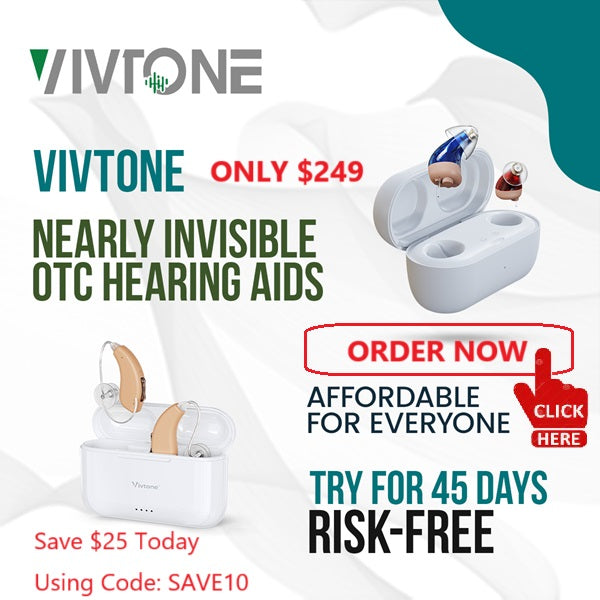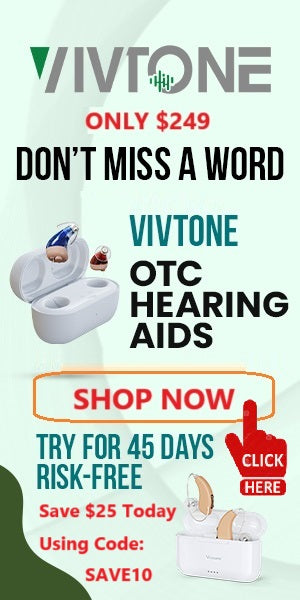The Essential Guide to Hearing Aid Supplies: What You Need to Know

Having the right supplies for your hearing aids is important to ensure they work well and last a long time. In this article, we'll go through the hearing aid parts and accessories you might need, like batteries, cleaning kits, moisture protection, and more. We’ll explain what each supply is for and how it helps your hearing aids perform better. This guide will help you understand the essentials, so you can take good care of your hearing devices.
Button Cell vs. Rechargeable: Choosing the Right Hearing Aid Batteries

Batteries are the significant things that keep your hearing device running and reliable. The right type can make quite a big difference in using and enjoying your hearing aids. There are mainly two kinds of batteries available: Button cell disposable batteries and rechargeable batteries that can be reused time and again.
|
Feature |
Button Cell (Disposable) |
Rechargeable (Usable Again) |
|
How Long They Last |
5 to 14 days per battery |
Several years, charge them every night |
|
Daily Use |
New battery when it runs out |
Put in charger to power up |
|
Costs |
Buy new ones regularly |
Pay more at start, save money later |
|
Being Eco-friendly |
More batteries in trash |
Fewer batteries thrown away |
|
Power During the Day |
Gets weaker over days |
Stays strong all day |
|
If You Run Out |
Carry extra batteries for a quick swap |
Need a charger or a charged spare |
Button Cell Batteries:
- Ideal for those people who prefer simple, no-hassle maintenance and do not have any problem with the replacement of batteries after short intervals.
- Great for those with limited access to electricity or who are on the road a lot and would like to change batteries on the road.
- It is good for anyone who is budget-conscious upfront, as button cell batteries are cheaper upfront.
Rechargeable Batteries:
- Ideal for people who can incorporate the recharging into their routine and who don't want to constantly buy more batteries.
- Great for people with dexterity issues who may struggle with small batteries.
- A great substitute for those thinking 'green' about producing waste.
If you're one of those on-the-go people and looking for a hassle-free substitute, then button cell batteries may be the one best suited for you. Or if your goal is to make your life easier not having to worry too much if you run out of power, then you may want to consider rechargeable batteries.
Brushes, Wax Pickers, and Wipes: The Trio for a Clean Hearing Aid

A clean hearing aid promotes hygiene and ensures that the best possible sound quality is maintained. Dirt, earwax, and moisture can decrease performance; hence, daily care becomes a critical routine for users. Different special tools are designed for specific purposes, including brushes, wax pickers, and wipes.
Brushes:
- Remove debris from the microphone and speaker ports.
- Help maintain clear sound by preventing blockages.
- Suitable for daily use to brush away surface dirt.
Hearing aid brushes work in small spaces. Regularly brushing off the microphone and speaker areas prevents sound-blocking debris from building up. This simple action does much to enhance sound clarity and to stop feedback noises.
Wax Pickers:
- Designed to carefully remove earwax build-up that can muffle sound.
- Essential for in-the-ear hearing aids where wax accumulation is common.
- Prevents long-term damage caused by wax clogging critical components.
Hearing aids sit within an environment that naturally produces wax. Over time, this wax can work its way into vents and receivers, muffling the sound. Wax removal tools, or pickers, gently scoop or otherwise push this substance out without causing damage to internal hearing aid parts and accessories.
Wipes:
- Disinfect and clean the surface, reducing the risk of skin irritation.
- Alcohol-free wipes prevent damage to the hearing aid materials.
- Convenient for quick clean-ups throughout the day, especially when out and about.
For the outer portions of the hearing aids, special non-alcoholic wipes can be utilized. These have a double purpose: they clean oils and sweat off the hearing aid to keep skin healthy around the ear and help preserve the material of the hearing aid itself, which sometimes can be sensitive to harsh chemicals.
Silica Gel Packs and Electronic Dryers
Water can wreak havoc with your hearing aids, causing damage and resulting in poor sound quality. Lucky for you, there are two helpful devices that will help in keeping them dry: silica gel packs and electronic dryers. Silica gel packs are very effective when it comes to absorbing moisture while not using your hearing aids, such as during sleep. However, electronic dryers accomplish much more besides drying: they often employ a warm touch and sometimes UV light to zap away moisture and germs. This halts rust and keeps the tiny hearing aid parts and accessories inside your hearing aids in good working condition. These may be an investment in extending the lives of your hearing aids and making them easier to use, protecting them from the everyday wetness, sweat, and the real annoyance of steam-up when it is humid.
Earmolds vs. Domes for Hearing Aids
Hearing aids can only help you hear better if they fit right, and that's why earmolds and domes are super important. Earmolds are tailor-made just for you, fitting snugly inside your ear canal. An audiologist measures your ears to create them, so they're super comfy and stay put, even if you need a more powerful hearing aid. They also help keep sounds clear and prevent them from escaping and causing that annoying whistling noise.
Domes are a bit different; not custom-made for you, but they do come in lots of sizes and styles. You can choose from options such as open or closed designs that pop onto your hearing aid and go in your ear. While they work best for people with milder hearing loss, they're really good at letting air and sound in so everything feels more natural.
If you want something fast and standard, then domes are great. But if you are after something that fits perfectly and is comfortable for an extended period of time, then earmolds are the way to go.
Cases, Clips, and Covers
To keep your hearing aids in top shape, they need a good defense against the daily grind. That's where cases, clips, and covers come in—they're like armor for your hearing aids. A solid case is a must-have for when you're not wearing them—it keeps out dust, dampness, and prevents those 'oops' moments that can happen when they're just lying around. You can find one that suits your style, whether that's a tough hard case or a soft pouch for easy carrying.
Clips are lifesavers if you're always on the go. They secure your hearing aids to your clothes, so even if one slips out, it won't get lost. This is super handy for anyone who's active or loves the great outdoors—no more panic-searching for a dropped hearing aid!
And don't forget about covers. These little heroes wrap up your hearing aids to fend off water, dirt, and sweat, making them perfect companions for humid places or sweaty workouts. With the right covers made from stuff like silicone, your hearing aids can brave almost any environment.
Filters, Tubes, and Tips
Just like any other appliance used daily, hearing aids are prone to wear and tear. Part of the deterioration that one is bound to encounter involves filters, tubes, and tips. These hearing aid parts and accessories may be responsible for unfiltered sound quality and uneasy wearability in their malfunction. Filters catch dust and earwax before they make their way deeper into your hearing aid and cause damage or mute the sound. But when they block up, that is when it is time to change them, to keep all running nice and smooth. Depending on how much wax your ears put out, sometimes more or less frequently, it's usually once a month or two.
Tubes and tips are that part of the hearing aid that directs sound into your ear. With time, these may harden, discolor, or even shrink, which can affect both fit and function. If your hearing aids are no longer fitting as well as they did, or if the sound is not as clear, it could be a sign that these need replacement. Generally, the rule is to replace tubes every three to six months and tips as often as every few weeks, especially for in-the-ear models. All these hearing aid parts and accessories should be monitored and replaced on a regular basis to ensure optimal performance of the hearing aid.
Microphone, Amplifier, and Receiver
Though they may be small in size, hearing aids do indeed possess some pretty cool technology to help one's hearing. The middle of each hearing aid is basically composed of three parts: the microphone, amplifier, and receiver. They may be thought of as members of a team working together to make sounds louder and clearer for you.
|
Part of Hearing Aid |
How It Works |
Details |
|
Microphone |
It acts like an ear, grabbing sounds from your environment. |
● Some have two mics to catch sound direction better. ● Can hear quiet sounds, almost like whispers. ● Responds to a range of sounds, similar to a piano's keys. |
|
Amplifier |
This part increases the volume of the sounds so you can hear them easily. |
● The loudness can be adjusted manually or automatically. ● Powerful enough to amplify sound with minimal battery use. ● Keeps the sound clear without adding unwanted noise. |
|
Receiver |
Works like a mini speaker to bring the sound into your ear. |
● Matches well with the other parts of the hearing aid. ● Tailored to enhance the right volume needed for your hearing. ● Covers a range of sounds that are most common in daily life, like conversations. |
Choose the Right Hearing Aid Supplies for Better Care
Correctly taking care of them would mean that they stay in good working condition and last longer. It is for this reason that choosing the right supplies is going to be required, which includes the types of batteries that will suit your style of living and cleaning tools that will keep the aids spotless. Neither should protective gear be forgotten: things like cases, clips, and covers protect the aids while you are outdoors and on the move. With just a little simple care and some accessories, your hearing aids will be in top shape. Not only will this make all the difference to your ability to hear more clearly every day, but it will also better prepare your hearing aids for whatever life may throw their way.
Hear better, live better! This guide covers all the essential hearing aid supplies you need, from batteries and cleaning kits to protective cases. Hear better, live better! This guide covers all the essential hearing aid supplies you need, from batteries and cleaning kits to protective cases.




